
Avalon Hill Games Inc. is a game company that publishes wargames and strategic board games. It has also published miniature wargaming rules, role-playing games and sports simulations. It is a subsidiary of Hasbro, and operates under the company's "Hasbro Gaming" division.

Charles Swann Roberts was a wargame designer, railroad historian, and businessman. He is renowned as "The Father of Board Wargaming", having created the first commercially successful modern wargame in 1952 (Tactics), the first wargaming company in 1954, and designed the first board wargame based upon an actual historical battle (Gettysburg). He is also the author of a series of books on railroad history, published by the small publishing firm, Barnard, Roberts, and Company, Inc.
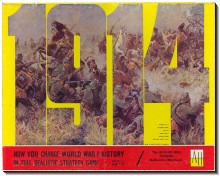
1914 is a board wargame published by Avalon Hill in 1968 that simulates the first few months of World War I on the Western Front.
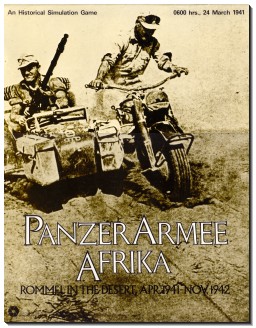
PanzerArmee Afrika, subtitled "Rommel in the Desert, April 1941 - November 1942", is a board wargame published by Simulations Publications, Inc. (SPI) in 1973 that simulates the World War II North African Campaign that pitted the Axis forces commanded by Erwin Rommel against Allied forces. The game was revised and republished in 1984 by Avalon Hill.
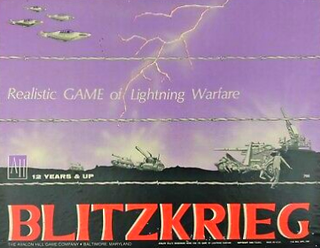
Blitzkrieg is a strategic-level wargame published by Avalon Hill in 1965 that simulates a non-historical attack by one major power against another using the blitzkrieg strategy. It was the first commercial wargame that did not simulate an actual historical battle, and with almost 400 counters, it was a precursor to the "monster" wargames of the 1970s featuring more than a thousand counters.

1776, subtitled "The Game of the American Revolutionary War", is a board wargame published by Avalon Hill in 1974 that simulates the American Revolutionary War. Its release was timed to coincide with the bicentenary of the Revolution, and for several years was a bestseller for Avalon Hill.

Battle of the Bulge is a board wargame published by Avalon Hill (AH) in 1965 that simulates the World War II battle of the same name. General Anthony McAuliffe (ret.), who had been commanding officer at Bastogne during the Battle of the Bulge, was a consultant during the game's development. The game proved popular and sold more than 120,000 copies, but was dogged by criticisms of historical inaccuracies, and was finally replaced by a completely new edition in 1981. A third edition in 1991 was released as part of the Smithsonian American History Series.
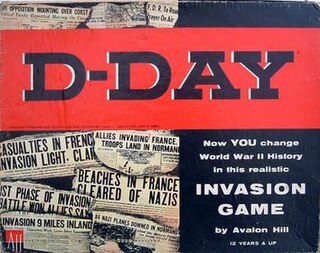
D-Day is a board wargame published by Avalon Hill in 1961 that simulates the six months of the European Campaign of World War II from the Normandy Invasion to the crossing of the Rhine. It was the first wargame to feature the now ubiquitous hex grid map and cardboard counters, and was revised and re-released in 1962, 1965, 1971, 1977 and 1991.

Afrika Korps is a board wargame published by Avalon Hill in 1964 and re-released in 1965 and 1978 that simulates the North Africa Campaign during World War II.
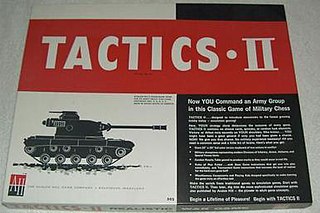
Tactics II is a wargame designed by Charles S. Roberts and published by the Avalon Hill game company in 1958 and then re-released again in 1961 and 1972. This was the second game produced by Roberts following the success of his first game, Tactics.

The Arab-Israeli Wars, subtitled "Tank Battles in the Mideast 1956–73", is a board wargame published by Avalon Hill in 1977 that simulates various battles during the Suez Crisis, Six-Day War and Yom Kippur War.
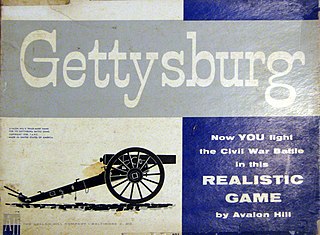
Gettysburg is a board wargame produced by Avalon Hill in 1958 that re-enacts the American Civil War battle of Gettysburg. The game rules were groundbreaking in several respects, and the game, revised several times, was a bestseller for Avalon Hill for several decades.

Conquistador, originally subtitled "The Age of Exploration: 1495–1600", is a board game published by Simulations Publications, Inc. (SPI) in 1976 that simulates the exploration of the New World in the 16th century. Players take on the role of European countries sending expeditions to find gold and establish colonies. Although the design uses the trappings of board wargames such as a hex map, combat is not a major part of the game.

Panzergruppe Guderian is a board wargame published by Simulations Publications, Inc. in 1976 that simulates the 1941 Battle of Smolensk during World War II.
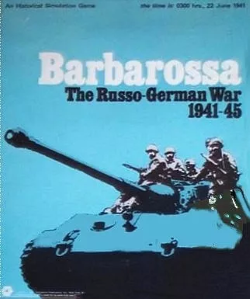
Barbarossa: The Russo-German War 1941-45 is a board wargame published by Simulations Publications Inc. (SPI) in 1969 that simulates the conflict between Germany and the Soviet Union on the Eastern Front of World War II. This was only SPI's second game produced during a preliminary round of "Test Series" games, and proved to be the most popular. Despite the title, taken from the German operational name for their initial invasion of the Soviet Union, the game covers the entire Eastern Front campaign from the German invasion in 1941 to the Fall of Berlin in 1945.

Korea: The Mobile War is a board wargame published by Simulations Publications Inc. (SPI) in 1969 that simulates the Korean War.

Napoleon at Waterloo is a board wargame published by Simulations Publications Inc. (SPI) in 1971 that simulates the Battle of Waterloo. The game, which features simple rules, was designed as an introduction to board wargaming, and was given as a free gift with each subscription to SPI's Strategy & Tactics magazine.

Tannenberg is a board wargame published by Simulations Publications Inc. (SPI) in 1969 that simulates the Battle of Tannenberg on World War I's Eastern Front. The game was created by game designer Jim Dunnigan as a companion piece for Avalon Hill's Western Front wargame 1914, also designed by Dunnigan. Although Tannenberg could be played as a standalone game, rules were included to combine it and 1914 into a two-front wargame. Nine years later, Tannenberg was completely revised and republished as a free pull-out game in SPI's house magazine Strategy & Tactics to promote SPI's upcoming release of The Great War in the East. The second edition was also sold as a standalone game.

Normandy: The Invasion of Europe 1944 is a board wargame published by Simulations Publications Inc. (SPI) in 1969 that simulates the D-Day landings on the beaches of Normandy, and the six days that followed as the German forces tried to prevent an Allied break-out. A second revised edition was published in 1971

Tank!, subtitled "Armored Combat in the 20th Century", is a board wargame published by Simulations Publiucations Inc. (SPI) in 1974 that simulates tank versus tank and tank versus infantry combat set anywhere from World War II to the middle of the twentieth century.





















